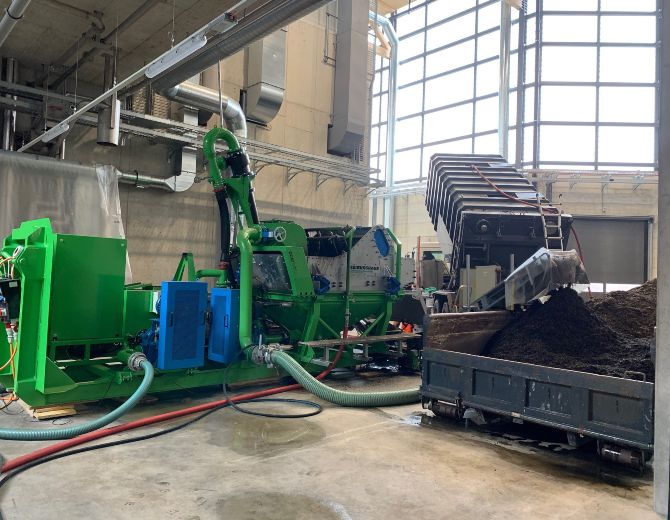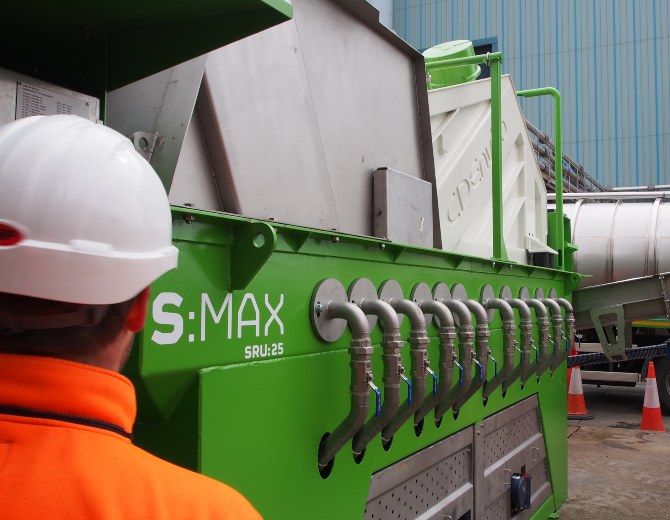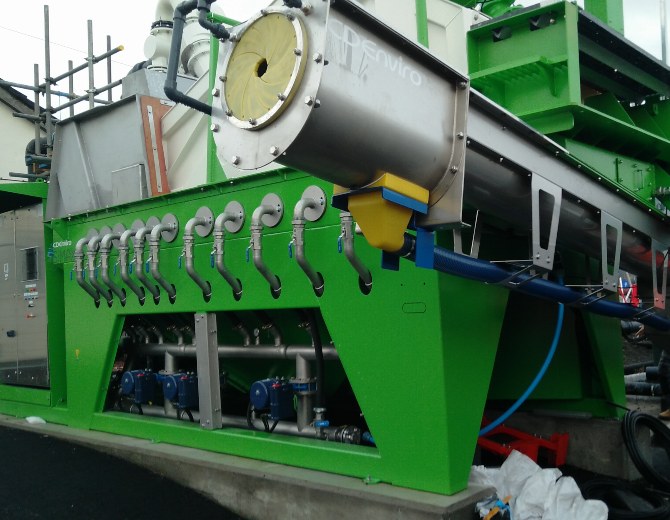Volume
170 m3/h
Material
Digester & Tank Cleaning, Sludge Dewatering
Output
High Quality Sludge, Grit & Rag
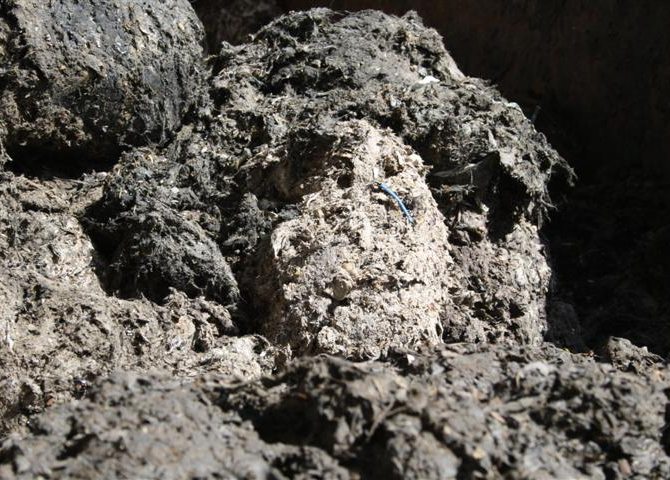
THE CHALLENGE
The sewage treatment works on Reading’s Island Road was designed not only to meet the technical demands of effluent and sludge quality, but also to address a wide spectrum of environmental issues. However, the challenge of certain tankers being unable to discharge was ultimately affecting the levels of CHP which could be produced.
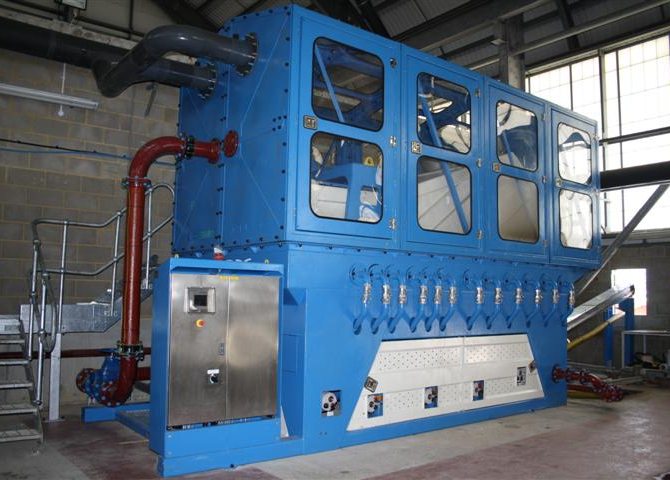
THE SOLUTION
Opened in 2005, the TWUL Reading sewage treatment works receives tankered sludge from a number of surrounding satellite sites. As a central processing centre typically up to 30 tankers per day discharge at the site which has also been known to accept sludge from tankers up to 50 miles away due to its capacity.
Once discharged into the system the sludge goes through the anaerobic digesters under a controlled process to capture methane for energy production. The S:MAX unit has brought improvements and greater efficiency to the TWUL Reading STW screening operation, Thames Water have reported a high retention rate with very little ‘good sludge carry over to screenings’ due to a sludge washing spray bar which washes incoming material breaking down clumped sludge or sludge that is stuck together.
Not only can the system accept a wider range of material, i.e. heavy bound sludge and sludge crust, but the S:MAX unit also allows tankers to discharge directly into the system without the need for a reception tank. The incoming material is washed to liberate clumped sludge or sludge that is stuck together and won’t pass through the screening media.
Modifications were made to the S:MAX to suit the requirements of Thames Water including the addition of an odour enclosure and the compactor orientation which was changed to allow the unit to discharge outside of the building. The odour enclosure proved to be necessary for the safe operation and placement
of the system inside the existing building.
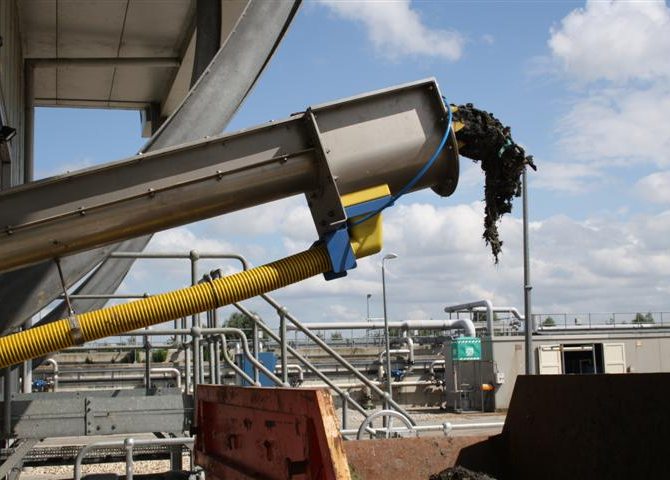
THE RESULTS
Before the installation of the S:MAX system only certain tankers were able to discharge at the TWUL Reading STW, which was ultimately affecting the levels of CHP which could be produced. Following the installation of the S:MAX unit at the Reading site, the system can accept a much wider range of material, effectively remove rag and quickly discharge it from the system.


